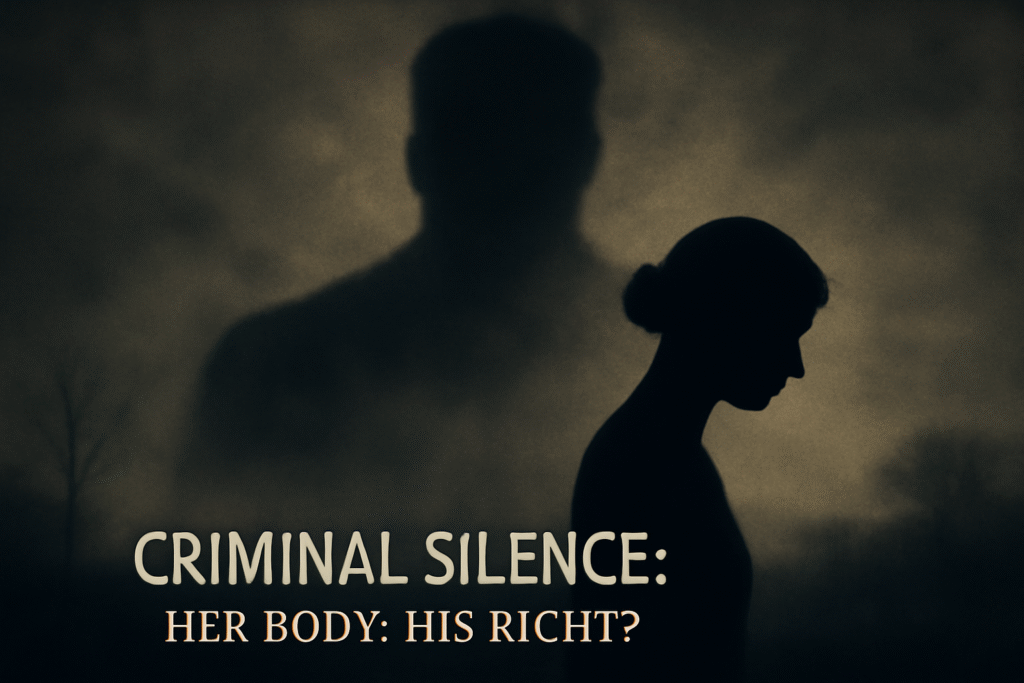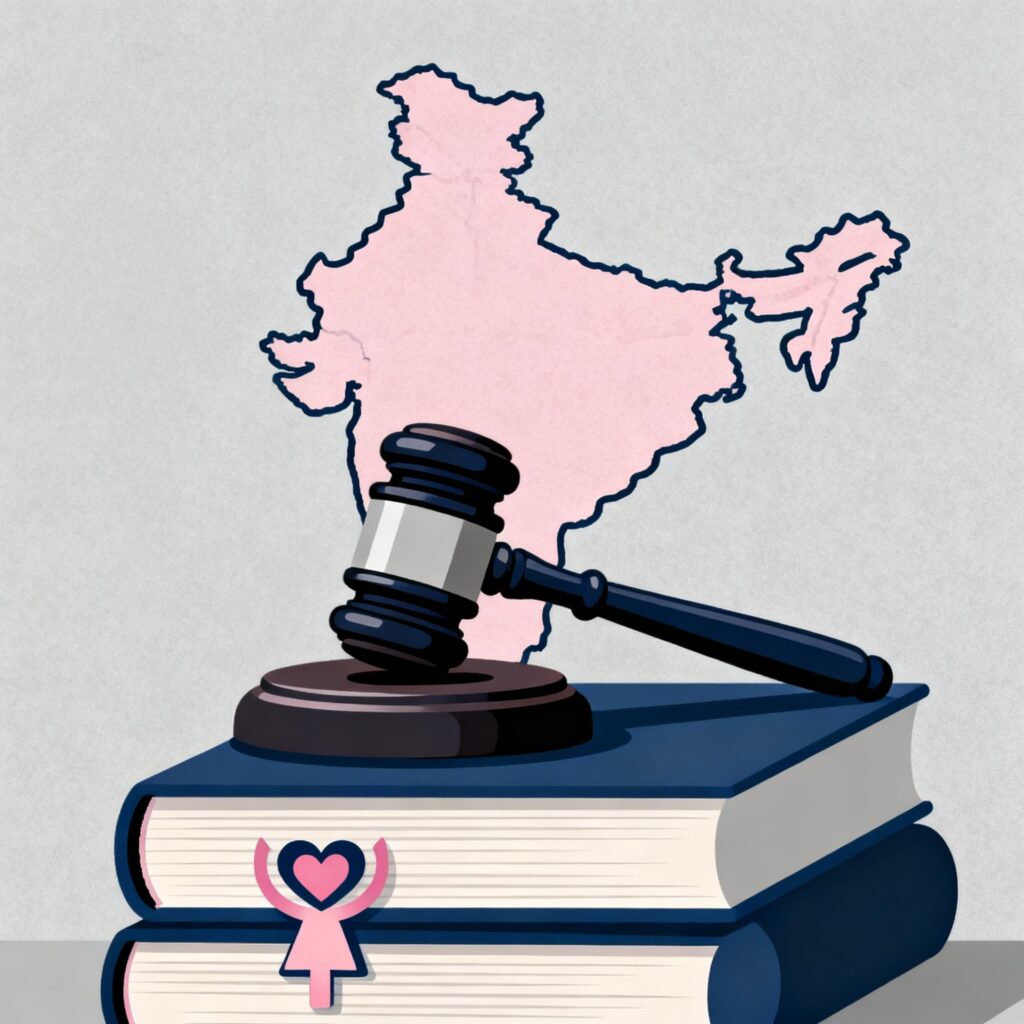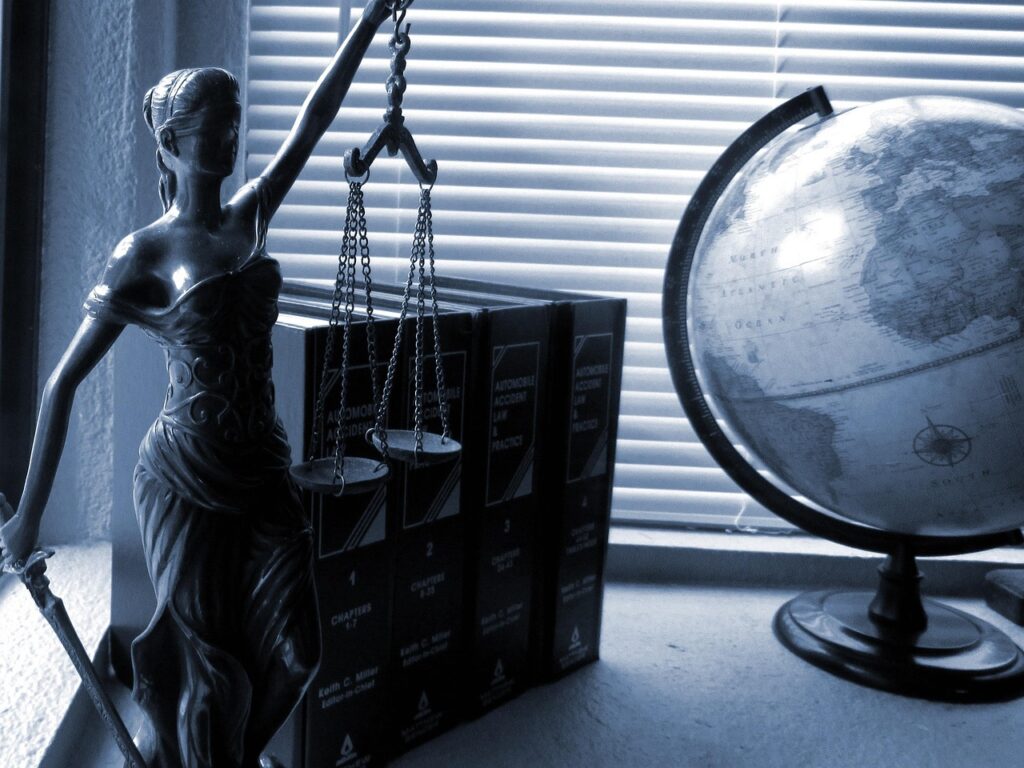Published On: October 10th 2025
Authored By: Hariom Awasthi
Shri Ram Institute of Law
Abstract
The swift digitization of creative content has certainly changed the worldwide intellectual property climate, making copyright both more valuable and more susceptible than any time in history. The digital environment provides enormous benefits to creators that allow them to distribute works for little or no cost and to reach a global audience, while at the same time, the same environment opens the door to widespread infringements: online piracy, streaming platform infringement, peer-to-peer sharing, and unauthorized reproduction and sharing on social media sites, just to name a few. Even stricter copyright legal frameworks have been established (e.g. the U.S. Digital Millennium Copyright Act (DMCA) of 1998; the EU Digital Single Market Directive; India’s Copyright Act, 1957 as amended) to keep pace with rapid advancements in technology, challenges with enforcement, cross-border issues, and the need for copyright doctrines to accommodate new technologies such as automated artificial intelligence (AI), blockchain, and non-fungible tokens (NFTs).
This article will provide a practice-based overview of copyright infringement in the digital sphere, focusing on statutory remedies, relevant case law, and enforcement models. In addition, it will explore key challenges, such as jurisdiction, intermediary liability, limited remedies in the online context, limited damages, etc. Comparative insights from the U.S., European Union and India, legal developments, and the role of international treaties administered by the World Intellectual Property Organization (WIPO) will provide context for consideration of future approaches to enforcement. There will be a specific focus on applicable forms of preventive measures in addition to taking the appropriate enforcement opportunities and remedies for the use of copyright. Importantly, there will be a focus on practical recommendations for businesses, creators, and government policymakers, specifically as they relate to the copyright enforcement context.
Moving forward, although the law is attempting to catch-up with technological disruption, a balanced approach with practical compliance, effective remedies, and cross-border cooperation is the best way forward. The intent of this article is to prepare practitioners, businesses, and policymakers with not only the legal information and implications, but also the practical tools that will help them navigate the enforcement of copyright in the digital age.
Introduction
Copyright has been the customary/legal foundation of the creative industries, granting authors exclusive rights to copy their works in exchange for distributing them to the public. In the analogue environment, infringement was relatively straightforward—where a physical item (unauthorized book printing, counterfeit record or unlicensed broadcast television) could be identified and enforced within the nation. However, the copyright paradigm has changed with digital technology, and infringement has become truly global. For example, with one infringing act–uploading a movie to a peer-to-peer network–there could be millions of unauthorized copies of that film in a matter of seconds, across geographies.[1]
Although it is difficult to grapple the sheer scope of creativity offered by digital technologies, the easy reproduction, instantaneous distribution and access to global audiences pose the greatest challenges for copyright advocacy and enforcement. Digital piracy can occur virtually with search engines, as opposed to physical piracy that included large scale operations and physical supply chains (eg., piracy included larger levels of meaningful human control).[2] Many platforms, including user generated content sites, torrent sites, unauthorized IPTV services and social media networks may engage in limited scope and scale of copyright piracy. Ultimately, without any meaningful control, the loss of potential revenues is felt by creators across industries, particularly in film, music and publishing.[3]
Legal systems from around the world have made attempts to respond. In the United States, the DMCA (1998) has created a notice-and-take down process; added an anti-circumvention element; and generally introduced modernity to copyright.[4] The European Union’s DSM Directive (2019) has gone much further by placing proactive obligations on online platforms to prevent infringing uploads as well.[5] India has modernized its Copyright Act of 1957,[6] and its courts have even made unique developments like putting John Doe orders in place to proactively block access to piracy websites.[7] At the international level, the WIPO Copyright Treaty (WCT) and WIPO Performances and Phonograms Treaty (WPPT) produced harmonized conventions that set out the framework for digital copyright protection.[8]
At the same time, enforcement is also challenging. The issue of jurisdiction arises, especially when the person engaging in piracy is in another county.[9] The question of intermediary liability also raises debates about whether internet service providers or other intermediaries (hosting, social media and other web platforms) bear responsibilities (or are liable) for encryption or encrypting access.[10] But even the challenges of evidentiary proof exist in identifying anonymous infringers who (try to) hide behind a VPN and/or some encryption.[11] And the emergence of artificial intelligence (AI), blockchain, and non-fungible tokens (NFT) raises new questions related to copyright ownership and enforcement and in situations not previously contemplated by legislation.[12]
In this article, we provide a comprehensive, practice-oriented analysis of copyright infringement in the digital age. It identifies statutory remedies, courts, and enforcement, while also reporting the practical obstacles to enforcement that rights holders confront. In a comparative and international law context, this article describes some of the ways in which different jurisdictions emphasize either protection or access. Ultimately, the article provides practical advice to parties- businesses, creators, passers-by, and policy makers, to help hold rights holders more accountable in the digital copyright space while encouraging innovation and access by the public.
Methodology
This article applies the more doctrinal approach and the less doctrinal but still practical “practice-oriented” legal research methodology. The doctrinal approach depends largely on statutory frameworks, case law, treaties, and policy sources governing copyright; whereas the practice-oriented approach seeks to understand how the imposed laws operate practically in the real situations of creators, businesses, and practitioners. These two practical perspectives complement each other, allowing the study to be theoretically interesting and practically valuable.
The first part of the research methodology incorporates a doctrinal analysis of the copyright laws in various jurisdictions. Especially, statutes such as the Indian Copyright Act, 1957 (and amendments),[13] U.S. Copyright Act[14] and the Digital Millennium Copyright Act (DMCA)[15], and the European Union’s Digital Single Market (DSM) Directive[16]. This doctrinal study facilitates a list of remedial avenues available against infringement and third-party liability in the copyright landscape. The doctrinal research components also includes judicial precedent and especially landmark decisions read from the various jurisdictions as it illustrates how the Courts’ have interpreted and/or applied copyright laws in a digital space.
The second research methodology consisted of a comparative approach that provided an overall view of converging and diverging legal regimes. The comparative analysis also unveiled best practices and obstructions to be cognisant of in relation to global copyright enforcement. Furthermore, this analysis interrogated the international treaties such as World Intellectual Property Organization Copyright Treaty (WCT) and the World Intellectual Property Organization Performances and Phonograms Treaty (WPPT),[17] which lays down minimum requirements for digital copyright protections which all signatories must adhere to at a global level.
Third, the article has a practice dimension as the authors have emphasized how copyright remedies are practically enforced. It looks at practical challenges, such as intermediary liability, conflicting jurisdictions, evidential problems, and the speed of online infringement. While the authors discuss enforcement regimes such as takedown systems, John Doe orders, and technological protection measures, the authors develop clearly-measured analyses about practice, particularly which provides assistance to practitioners and policy-makers needs.
Finally, the methodology used secondary sources such as academic commentary, industry reports, policy papers, etc.[18] This contextualises doctrinal findings, but also places such findings in broader debates on access to knowledge, innovation and economic development. The secondary sources also strongly suggested a more balanced treatment of copyright, particularly as it relates to the balance with the rights of creators and the public rights interest in accessing, preserving and disseminating cultural goods and services.
Collectively, the authors have bent together a methodological package comprising doctrinal analysis, comparative analysis, practice orientation, and secondary research. As a result it allows them to not only explain the legal position but to deliver a practical perspective for practitioners, businesses and policy-makers who have to navigate the existing, outdated, and outmatched policy relating to the enforcement of copyright in the digital age.
Copyright in the Digital Age: A Changing Landscape
Digitization has altered copyright and infringement in many ways.
Common digital developments include,
- The ability of creators to reach immediate global audiences – through platforms like YouTube, Spotify, and Netflix;
- Digital Files can be copied forever without loss of quality;
- User-generated content (UGC) is extremely popular and there is clear infringement – but the lines between creative work and infringement are blurred; and
- Technology protections, such as digital rights management (DRM) and watermarking, are still important – but there are constant efforts by hackers to undermine protections.
Nature of Copyright Infringement Online
The various types of online copyright violations include:
Piracy Websites & Streaming – Unauthorized film & music streaming are still out of control.
Peer-to-Peer File Sharing – Torrenting is still used to distribute copyrighted works around the world.
Social Media Misuse – Images, music, and videos are frequently used without authorization.
Software Piracy – Cracked software is still widespread, despite enforcement.
New Technologies – The implications of AI datasets and NFTs pose new challenges with respect to copyright infringement.
Legal Remedies Against Online Copyright Infringement
As civil remedies are still the primary remedies for copyright owners. Civil remedies consist of;
Anton Piller Orders – Courts can authorize search and seizure to protect evidence.
Damages and Account of Profits – Courts may grant damages to account for the loss suffered. It is often not an easy task to quantify the damages due to digital infringement.
Injunctions – Courts can restrain the infringing material from being consumed or order removal from websites. In MySpace Inc. v. Super Cassettes Industries Ltd., the Delhi High Court ordered an injunction ordering the platform to remove Li’s copyrighted music.[19],
John Doe Orders – A much-used term in India, which provides the blocking of unidentified infringers. Most commonly seen in injunction applications related to film release, where the infringers are unknown..[20]
Criminal Remedies: The Indian Copyright Act provides sanctions for copyright infringement that includes criminal penalties (imprisonment and fines) for willful infringement.[21] The U.S. Copyright Act provides for criminalization of piracy on a large scale.
Administrative Remedies: The DMCA provides an online system for copyright owners to have infringing material removed with relative ease in the U.S.[22] The EU DSM Directive requires the online platforms to consider their part in preventing the uploading of infringing content.[23]
Enforcement Challenges in the Digital Sphere
- Jurisdictional Issues – Because online infringement typically happens across multiple jurisdictions, there are jurisdictional complications in protecting legitimate copyright.
- Intermediary Liability – Section 79 of the IT Act in India provides safe harbor to intermediaries, provided that it undertakes due diligence.[24] The U.S. DMCA also gives conditional immunity to platforms that expeditiously assist the removal of infringing content in response to takedown notices.
- Speed of Infringement – Digital infringement happens at light speed, and it is nearly impossible for courts and remedies to respond quickly enough while also being effective.
- Challenges relating to evidence – Conducting reverse tracing to identify infringers is difficult because they are more anonymous than ever via VPNs.
Comparative Perspectives
- United States – The DMCA began the notice and takedown procedures, and changes regarding anti-circumvention provisions.[25] Several landmark cases around safe harbor clarify the role of intermediaries.
- European Union – The DSM Directive obliges platforms to take a more proactive role in preventing uploading infringing content.[26]
- India – The Copyright Act in India’s adds provisions to enforce digitally, including recognizing technological protection measures. Several innovative jurisprudential developments, including John Doe Orders, have developed by India’s courts.[27]
- Treaties – WIPO’s WCT and WPPT treaties address the global approaches to these issues, but gaps exist on enforcement.
Emerging Issues
- Artificial Intelligence – AI systems trained on copyrighted works raise several questions about fair use, licensing, as well as who can be considered the author.[28]
- Blockchain & NFTs – NFTs raised questions by challenges to copyright ownership, because minting an NFT does not mean the copyright is transferred.
- Streaming & Subscription-based models – While legitimate streaming services reduce piracy, there is still illegal IPTV content available worldwide.
- User-Generated Content – Platforms face the challenge of encouraging creativity, while simultaneously trying to discourage infringement and improper attribution.
Policy Considerations & Practical Recommendations
For Businesses & Platforms: Use current technology for generic content recognition processes, acknowledge digital rights, compliance and position, and work directly with industry coalitions when applicable.
For Creators: When needed, invest in digital rights management strategies, actively monitor and assess infringement, and look for licensing and other settlement options directly the platform if you believe your rights have been infringed.
For Policymakers: Create recognition and enforcement mechanisms based on cross-border collaboration, ensuring careful balancing of intermediary liability, and funding education campaigns.
Conclusion
The digital interface provides unbelievable opportunities and undeniably tough challenges for copyright law. While copyright law has some statutory frameworks (DMCA, DSM Directive, India’s Copyright Act) to apply for remedies, there are often jurisdictional, intermediary liability and disruption issues to contend with when it comes to enforcement. We cannot ignore the new types of questions from new technologies such as AI, blockchain, NFTs, etc. that must be addressed.
For practitioners, much will depend on how copyright statutes can be used to complement practical content protection strategies through combinations of litigation strategies, licensing, compliance programs and international cooperation. For businesses and creators, awareness and proactive protection will always be paramount. For policymakers, consistent balancing of rights holders, platforms and the public will be key for copyright to be effective in a digital future.
References
[1] Mark A. Lemley & R. Anthony Reese, Reducing Digital Copyright Infringement Without Restricting Innovation, 56 Stan. L. Rev. 1345 (2004).
[2] Neil Weinstock Netanel, Copyright and a Democratic Civil Society, 106 Yale L.J. 283 (1996).
[3] PricewaterhouseCoopers, Global Entertainment & Media Outlook 2024–2028 (2024), https://www.pwc.com/outlook.
[4] Digital Millennium Copyright Act, supra note 3.
[5] Directive (EU) 2019/790, supra note 4.
[6] The Copyright Act, 1957, supra note 1.
[7] Taj Television India Pvt. Ltd. v. Rajan Mandal, 2003 (27) PTC 88 (Del. HC).
[8] WIPO Copyright Treaty, Dec. 20, 1996, 36 I.L.M. 65, https://wipolex.wipo.int.
[9] Graeme B. Dinwoodie, Developing a Private International Intellectual Property Law: The Demise of Territoriality?, 51 Wm. & Mary L. Rev. 711 (2009).
[10] Yochai Benkler, The Wealth of Networks: How Social Production Transforms Markets and Freedom 419–22 (2006).
[11] Pamela Samuelson, Privacy As Intellectual Property?, 52 Stan. L. Rev. 1125 (2000).
[12] Daniel J. Gervais, Exploring the Interfaces Between Big Data and Intellectual Property Law, 10 JIPITEC 100 (2019).
[13] The Copyright Act, No. 14 of 1957, INDIA CODE, https://www.indiacode.nic.in/handle/123456789/1826.
[14] Copyright Act of 1976, 17 U.S.C. §§ 101–810 (2018).
[15] Digital Millennium Copyright Act, Pub. L. No. 105-304, 112 Stat. 2860 (1998), https://www.copyright.gov/legislation/dmca.pdf.
[16] Directive (EU) 2019/790 of the European Parliament and of the Council of 17 Apr. 2019 on copyright and related rights in the Digital Single Market, 2019 O.J. (L 130) 92, https://eur-lex.europa.eu/legal-content/EN/TXT/?uri=CELEX%3A32019L0790.
[17] WIPO Copyright Treaty, Dec. 20, 1996, 36 I.L.M. 65, https://wipolex.wipo.int.
[18] International Intellectual Property Alliance, Special 301 Report (2024), https://iipa.org/reports.
[19] MySpace Inc. v. Super Cassettes Indus. Ltd., 2017 (69) PTC 1 (Del) (India).
[20] UTV Software Communication Ltd. v. 1337X.to & Ors., 2019 SCC OnLine Del 8002.
[21] Copyright Act, No. 14 of 1957, §§ 63–70, India Code (2012).
[22] Digital Millennium Copyright Act, 17 U.S.C. § 512 (1998).
[23] Directive (EU) 2019/790 of the European Parliament and of the Council of 17 April 2019 on copyright and related rights in the Digital Single Market, 2019 O.J. (L 130) 92.
[24] Information Technology Act, No. 21 of 2000, § 79, India Code (2008).
[25] Capitol Records, LLC v. Vimeo, LLC, 826 F.3d 78 (2d Cir. 2016).
[26] Directive (EU) 2019/790, supra note 5, art. 17.
[27] UTV Software Communication Ltd., supra note 2.
[28] Andersen v. Stability AI Ltd., No. 3:23-cv-00201 (N.D. Cal. filed Jan. 13, 2023).




